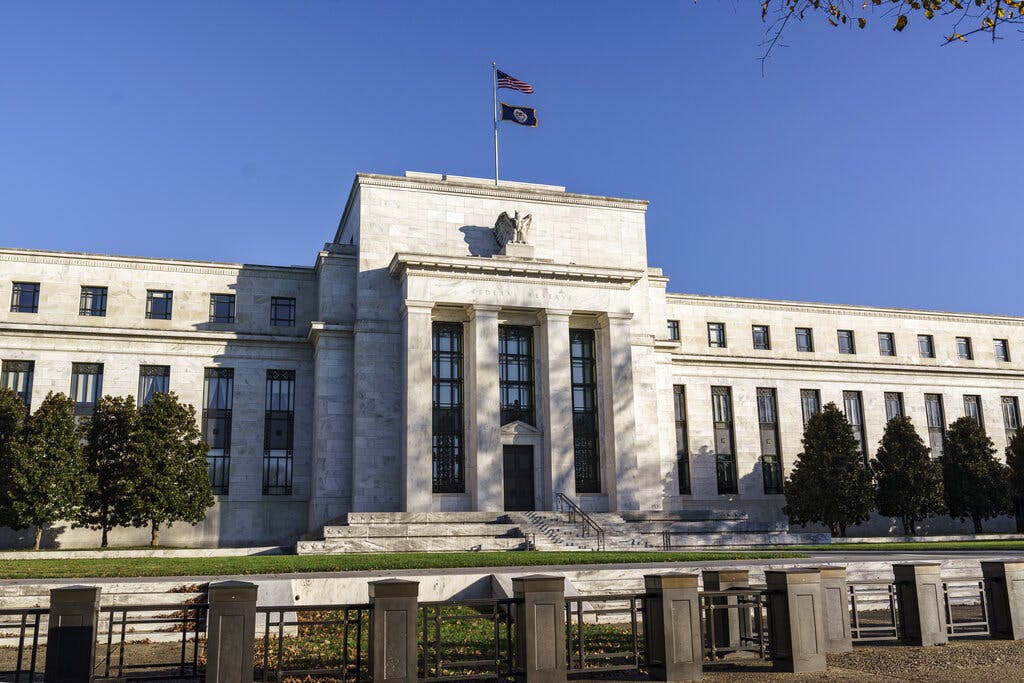The ‘Insolvency’ of the Fed
The Times observes that the Fed’s balance sheet is on a par with Silicon Valley Bank’s — illuminating the logic of a role for gold in the monetary system.

It’s nice to see in the Times the piece by Peter Coy likening the Fed’s balance sheet to Silicon Valley Bank. That might surprise the Grey Lady’s readers, but it won’t startle readers of Grant’s Interest Rate Observer — or, for that matter, the Sun. James Grant has been warning for years about the Fed’s balance sheet. We’ve covered his cautionary words. To us the Fed’s balance sheet illuminates the logic of a role for gold in the monetary system.
“A bad balance sheet killed Silicon Valley Bank,” Mr. Coy writes. “You know what other bank has a similar balance sheet?” he asks. “The Federal Reserve,” is the reply. An ex-Treasury official, Alex Pollock, goes further, telling us the Fed’s balance sheet “looks just like a Savings & Loan in 1980.” It echoes the worst banking crisis since the Depression. It’s a reminder that while we may be in a banking crisis, the real emergency is fiat money.
It was abandoning the gold standard, after all, that allowed central banks like the Fed to veer into monetary experiments like its Quantitative Easing, buying up trillions in assets while keeping interest rates artificially low. Now that rates are rising, a reckoning is at hand. The Fed’s QE assets “yield 2 percent or 3 percent, but the cost of funding them is now over 4 ½ percent,” Mr. Pollock notes — “a guaranteed way to lose money.”
Mr. Coy calls it “breathtaking” — “scary,” even — “how quickly things have gone south” for the Fed. That reflects the Fed’s operating losses since the interest rate hikes. The Congressional Research Service says that the Fed’s expenses “exceeded its income” due to the rise in interest rates, and “net income could remain negative for” years. Yet there’s no risk the Fed would “go bankrupt or need to be bailed out,” the nonpartisan CRS averred.
The Fed likewise waves off these developments — pay no attention to the losses behind the curtain, as it were — and ex-Fed officials say despite “any plausible losses,” the bank can “continue to operate normally.” Plus, too, Grant’s says, the Fed treats “realized losses as a deferred asset to the Treasury rather than a debit to its capital.” In layman’s terms, it has unlimited time to dig itself out of its hole. Silicon Valley Bank had no such luck.
Mr. Pollock, who directed financial research at Treasury, sums up the Fed’s view as “It doesn’t matter and no one cares.” There may be some truth to this, given the deference the press shows the Fed and the Fed’s own obfuscation of its work via the PhD-inflected language known as FedSpeak. Yet the bank runs could raise scrutiny on the Fed. Asked how Silicon Valley Bank’s balance sheet compares to the Fed’s, Mr. Pollock says “it’s worse.”
As far back as 2019, Grant’s declared that the Fed is “technically insolvent” — albeit merely technically, in that the Fed exempts itself from the rules it imposes on the commercial banks it regulates. At the time, the Fed’s assets against capital stood at “103:1 leverage for the organization as a whole,” Mr. Grant noted. Today’s balance sheet reflects leverage of 209 to one. Mark that the FDIC calls a bank with a 20 to one assets to capital ratio “well-capitalized.”
Yet it’s not so much the Fed’s solvency, as it is the soundness of the fiat money the central bank produces, that concerns us. It was a classic bank run — such as depicted in “It’s a Wonderful Life” — that toppled Silicon Valley Bank. A run on the Fed, one might say, isn’t possible. Yet if the Fed’s capital losses are “breathtaking,” what to make of the gold market now valuing the Fed’s fiat dollar at little more than a once-unimaginable 2,000th of an ounce?

